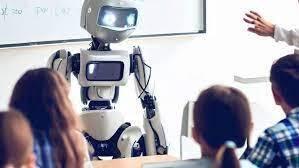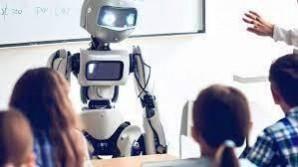

In the realm of modern education, personalized learning has emerged as a vital approach to cater to the diverse needs of students. With the advent of AI technology, particularly AI video repurposing, educators now have powerful educational tools to enhance this personalized learning experience.
One of these education tools is OpusClip, an advanced AI-video tool that transforms lengthy educational videos into shorter, more focused clips, optimized for consumption on various platforms.
In this blog post, we will explore seven ways in which AI video repurposing enhances personalized learning, revolutionizing the delivery and consumption of educational content. Join us as we delve into the transformative potential of AI-driven personalized learning and its profound impact on education.
Enhanced Learning Through OpusClip’s Video Repurposing
OpusClip revolutionizes the educational landscape by repurposing videos to enhance learning in several ways.
Leveraging advanced AI algorithms, OpusClip transforms lengthy educational videos into concise, engaging clips tailored to meet the unique needs of learners. Here’s how OpusClip enhances learning through video repurposing:
Condensed Learning Experience:
OpusClip condenses lengthy educational videos into shorter, more focused clips, ensuring that learners can access key information without investing extensive time.
By distilling complex concepts into digestible segments, OpusClip optimizes the learning experience, enabling students to absorb information more efficiently.
Visual Engagement:
With OpusClip, educational content becomes visually engaging, captivating learners’ attention and fostering deeper engagement. Through dynamic layouts, graphics, and animations, OpusClip enhances the visual appeal of educational videos, making learning more enjoyable and impactful.
Targeted Content Delivery
OpusClip enables educators to deliver targeted instruction by identifying and extracting key concepts from longer videos. By focusing on essential topics, OpusClip ensures that learners receive precise, relevant information, enhancing comprehension and retention.
Accessibility Features:
OpusClip enhances accessibility by providing features such as captioning and translation, making educational content more inclusive and accessible to diverse learners.
By catering to the needs of students with disabilities or language barriers, OpusClip ensures that all learners can engage with the material effectively.
Personalized Learning Paths:
OpusClip facilitates personalized learning paths by offering adaptive recommendations based on individual learning styles and preferences.
By analyzing student data and behavior, OpusClip tailors educational content to match the unique needs of each learner, promoting personalized and effective learning experiences.
Efficiency in Content Consumption
Efficiency in content consumption is a cornerstone benefit of AI video repurposing in personalized learning. Traditional educational videos, often lengthy and dense, can pose challenges for students in terms of attention span and retention.
AI video repurposing addresses these challenges by condensing lengthy videos into shorter, more focused clips, tailored to match the pace of modern learners.
Bite-Sized Learning
By breaking down complex topics into bite-sized chunks, AI video repurposing allows students to absorb information in manageable increments. This approach is particularly effective for students with shorter attention spans or those who prefer to consume information in smaller doses.
Instead of overwhelming learners with lengthy lectures or tutorials, educators can deliver content in concise segments that are easier to digest and retain.
Targeted Content Delivery
AI video repurposing also enables educators to target specific learning objectives more effectively. By identifying key concepts within a longer video and extracting them into separate clips, educators can ensure that students receive targeted instruction on the most important topics.
This not only saves time but also allows educators to prioritize content based on student needs and learning goals.
Multi-Modal Learning
Furthermore, AI video repurposing enhances multi-modal learning by incorporating visual and auditory elements into educational content. Short video clips can be supplemented with graphics, animations, and sound effects to reinforce key concepts and engage multiple senses.
This multi-modal approach appeals to a broader range of learning styles, making educational content more accessible and engaging for diverse learners.
Customization of Learning Materials
AI video repurposing also facilitates the customization of learning materials to match individual learning styles and preferences. Through the use of machine learning algorithms, educators can tailor educational content to cater to the unique needs of each student.
This includes personalized captions, translations, and annotations, as well as adaptive learning paths that recommend supplementary materials based on individual student progress and interests.
By providing students with content that is tailored to their specific needs, AI video repurposing enhances engagement and promotes deeper understanding of key concepts.
Accessibility and Inclusivity
Another significant advantage of AI video repurposing through tools like OpusClip in personalized learning is its ability to enhance accessibility and inclusivity.
Features such as captioning, translation, and dynamic layouts make educational content more accessible to students with disabilities, ensuring that all students can engage with the material effectively.
Additionally, AI-driven recommendations for supplementary materials based on individual student progress and interests help foster a more inclusive learning environment, where students of all abilities can thrive.
Adaptive Learning Paths
AI video repurposing enables educators to implement adaptive learning paths that cater to the unique needs of each student.
By analyzing student data and preferences, machine learning algorithms can recommend supplementary materials and learning resources that are tailored to individual learning styles and interests.
This promotes self-directed learning and empowers students to take control of their educational journey, leading to improved academic performance and increased engagement.
Collaboration and Feedback
AI video repurposing also facilitates collaboration among students and educators. Real-time feedback mechanisms integrated into video platforms enable students to receive personalized feedback on their work, fostering a culture of continuous improvement and collaboration.
Additionally, features such as active speaker detection and collaborative editing tools enable students to work together on projects, promoting teamwork and communication skills.
Data-Driven Insights and Improvement
One of the most powerful aspects of AI video repurposing in personalized learning is its ability to provide educators with valuable data-driven insights.
By analyzing student engagement, comprehension, and performance metrics, educators can gain valuable insights into student learning behaviors and preferences.
This enables educators to identify areas for improvement and refine their teaching strategies to better meet the needs of their students.
Wrapping Up
AI video repurposing holds immense potential to enhance personalized learning in education. From efficiency in content consumption to adaptive learning paths, AI video repurposing through educational tools such as OpusClip, offers a wide range of benefits that can revolutionize the way we teach and learn.
By leveraging the power of machine learning algorithms, educators can create dynamic and interactive learning experiences that cater to the unique needs and preferences of each student.
As AI technology continues to evolve, the possibilities for personalized learning are endless, and AI video repurposing stands at the forefront of this transformative movement.






